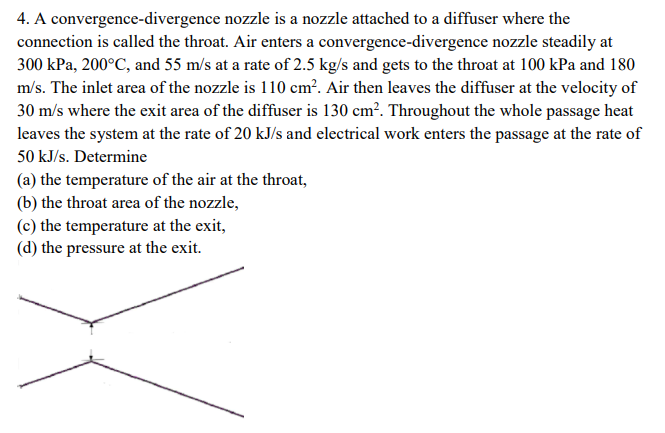A convergence-divergence nozzle is a nozzle attached to a diffuser where the connection is called the throat. Air enters a convergence-divergence nozzle steadily at 300 kPa, 200 C, and 55 m/s at a rate of 2.5 kg/s and gets to the throat at 100 kPa and 180 m/s. The inlet area of the nozzle is 100 cm^2. Air then leaves the diffuser at the velocity of 30 m/s where the exit area of the diffuser is 130 cm^2. Throughout the whole passage heat leaves the system at the rate of 20 kJ/s and electrical work enters the passage at the rate of 50 kJ/s. Determine: a) the temperature of the air at the throat b) the throat area of the nozzle c) the temperature at the exit d) the pressure at the exit
A convergence-divergence nozzle is a nozzle attached to a diffuser where the connection is called the throat. Air enters a convergence-divergence nozzle steadily at 300 kPa, 200 C, and 55 m/s at a rate of 2.5 kg/s and gets to the throat at 100 kPa and 180 m/s. The inlet area of the nozzle is 100 cm^2. Air then leaves the diffuser at the velocity of 30 m/s where the exit area of the diffuser is 130 cm^2. Throughout the whole passage heat leaves the system at the rate of 20 kJ/s and electrical work enters the passage at the rate of 50 kJ/s. Determine:
a) the temperature of the air at the throat
b) the throat area of the nozzle
c) the temperature at the exit
d) the pressure at the exit
I need help with all parts as my teacher assigned this question and barely taught us how to do it, thank you!

Trending now
This is a popular solution!
Step by step
Solved in 5 steps with 17 images









